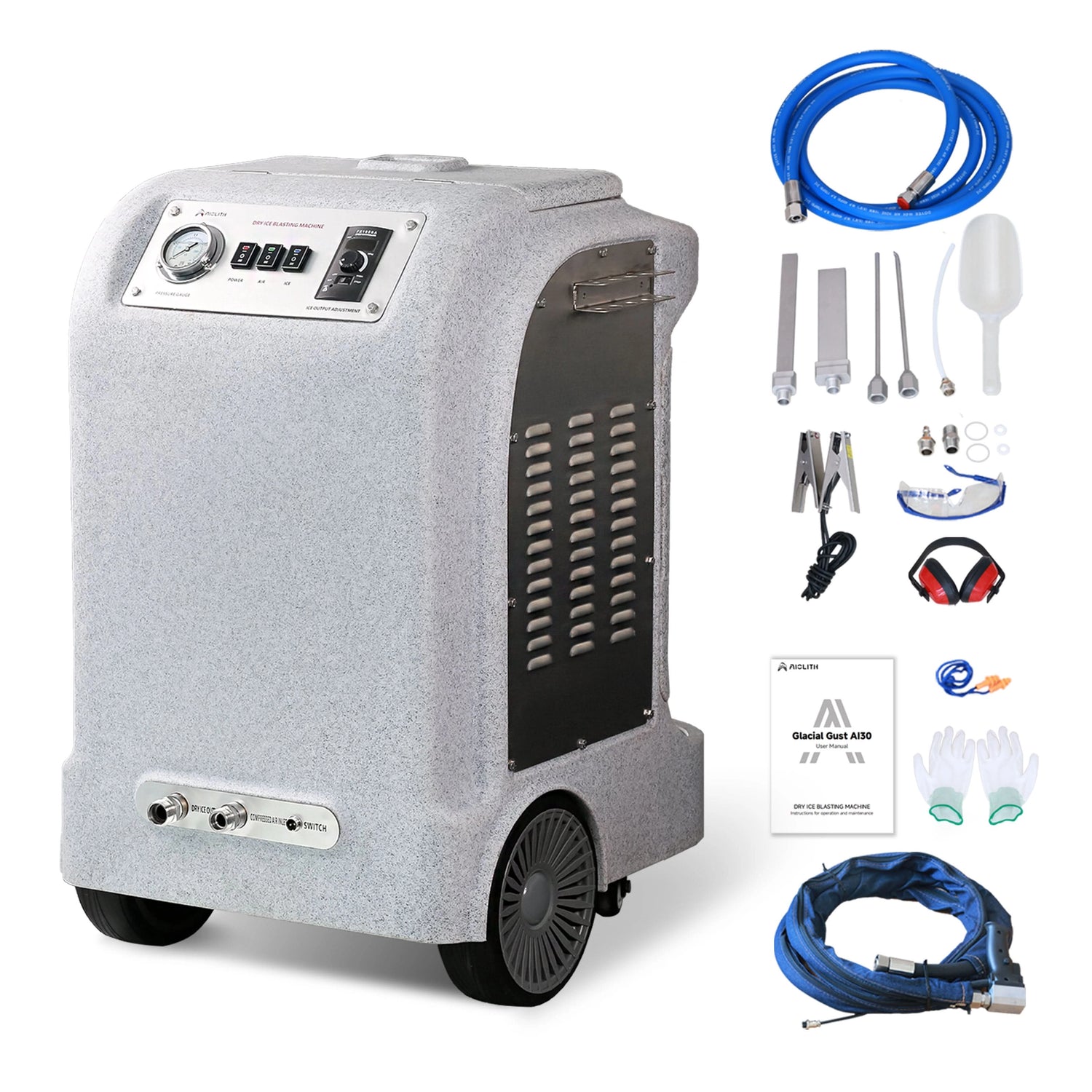Do You Put Soap in a Floor Scrubber? 7 Costly Mistakes to Avoid When Using Commercial Machines
Share
Why the Question Matters
Business owners and facility managers often ask: “Do you put soap in a floor scrubber?” The wrong approach can lead to damaged machines, wasted money, slippery floors, and poor hygiene results. According to the Occupational Safety and Health Administration (OSHA), improper use of cleaning chemicals is a leading cause of workplace accidents (OSHA, 2020).
When operating advanced equipment like the Aiolith commercial floor scrubber, understanding whether to use soap—and how much—is critical for both performance and safety.
Do You Put Soap in a Floor Scrubber? The Correct Answer
Yes, you can put cleaning solution (often referred to as “soap”) into a floor scrubber, but not just any soap. Commercial-grade floor scrubbers, such as Aiolith machines, are designed to use specialized cleaning detergents. These are low-foaming solutions that:
- Prevent machine damage
- Improve cleaning effectiveness
- Reduce streaks and residue
- Enhance safety by minimizing slippery surfaces
Household soaps or high-foaming detergents should never be used because they can clog filters, damage the vacuum system, and shorten machine lifespan.
The Role of Cleaning Detergents in Scrubbing
A floor scrubber without detergent is like a dishwasher running with plain water—it works, but not nearly as well. According to research published in the Journal of Cleaning Science (Kleiner & Patel, 2021), specialized detergents reduce microbial loads on commercial flooring by up to 70% more effectively than water alone.
Comparison Table: Soap vs. No Soap in Floor Scrubbers
| Factor | With Soap/Detergent | Without Soap/Detergent | Aiolith Advantage |
|---|---|---|---|
| Cleaning Effectiveness | Removes grease, grime, and bacteria | Only lifts loose dirt | Optimized for maximum hygiene |
| Machine Safety | Safe with low-foam detergent | Safe, but less effective | Built-in compatibility with eco detergents |
| Operating Costs | Slightly higher due to detergent use | Lower upfront but may require re-cleaning | Reduced waste with precision chemical dosing |
| Floor Safety | Non-slippery if correct solution is used | Dry but less sanitized | Fast-drying suction system ensures safety |
| Longevity of Machine | Protected with correct product | Lower wear but poor hygiene | Extended lifespan with designed detergents |
How Much Soap Should You Use in a Floor Scrubber?
Most manufacturers recommend a ratio of 1–3 ounces of concentrated detergent per gallon of water. Aiolith floor scrubbers are engineered with automatic solution dosing systems, ensuring operators never overuse detergent—a common mistake that wastes money and risks slippery floors.
Common Mistakes When Adding Soap to Floor Scrubbers
- Using Household Soap – Creates excess foam and damages vacuum motors.
- Overusing Detergent – Leads to sticky residue that attracts more dirt.
- Skipping Detergent Altogether – Results in dull floors and hidden bacteria.
- Mixing Brands of Detergent – Some chemicals react poorly when combined.
- Not Following Manufacturer Instructions – Every machine has unique dosing needs.
Why Aiolith Floor Scrubbers Solve These Pain Points
Choosing Aiolith scrubbers helps eliminate these common detergent problems:
- Low-foam compatibility: Designed to prevent clogs and damage.
- Precise dosing systems: Save money and extend machine life.
- Powerful suction technology: Leaves floors clean, dry, and slip-resistant.
- Durable construction: Handles daily cleaning in schools, malls, warehouses, and hospitals.
These features make Aiolith an excellent choice for businesses tired of wasting labor hours and resources on ineffective cleaning practices.
Cost Analysis: Water-Only vs. Soap-Assisted Cleaning
| Factor | Water Only | With Soap (Aiolith Recommended) |
|---|---|---|
| Upfront Costs | Lower | Slightly higher due to detergent use |
| Labor Costs | Higher (re-cleaning needed) | Lower (cleaner floors in fewer passes) |
| Chemical Safety | No chemical risk | Safe with approved detergents |
| Hygiene Effectiveness | Moderate | High, kills bacteria and removes grease |
| ROI Timeline | Longer | Faster due to reduced rework and labor |
Environmental Considerations
Many fear detergents harm the environment. However, modern eco-certified cleaning agents are both biodegradable and safe for wastewater systems. According to the European Chemicals Agency (ECHA, 2022), certified detergents reduce environmental impact by up to 40% compared to traditional cleaning chemicals (ECHA). Aiolith machines are fully compatible with such eco-friendly products.
FAQ: Do You Put Soap in a Floor Scrubber?
Q1: Can I use dish soap or laundry detergent in my scrubber?
A: No. These soaps foam excessively and can damage the machine. Use only commercial low-foaming floor detergents.
Q2: What happens if I use too much soap?
A: It leaves a sticky residue, wastes money, and creates slip hazards. Aiolith scrubbers with dosing systems help prevent this.
Q3: Can I run my floor scrubber with just water?
A: Yes, but it won’t be as effective. For grease and bacteria, detergents are necessary.
Q4: Are detergents safe for sensitive flooring like vinyl or wood?
A: Yes, provided you use the right pH-balanced detergent recommended by the manufacturer.
Q5: How long will an Aiolith scrubber last if used with detergent?
A: Typically 7–10 years with proper care and maintenance.
Conclusion: The Right Way to Use Soap in a Floor Scrubber
So, do you put soap in a floor scrubber? Yes—but it must be the right kind of detergent and in the right amount. Businesses that rely on Aiolith floor scrubbers benefit from machines designed to work seamlessly with professional-grade cleaning solutions, delivering safer, cleaner, and more cost-effective floors.
By avoiding common mistakes and using soap correctly, facilities can extend machine life, reduce costs, and create healthier environments for staff and customers.
References
OSHA. (2020). Safe use of cleaning chemicals in the workplace. Available here.
Kleiner, D., & Patel, R. (2021). Effectiveness of detergents in commercial floor sanitation. Journal of Cleaning Science. Read here.
European Chemicals Agency (ECHA). (2022). Cleaning product regulations and environmental safety. Available here.

